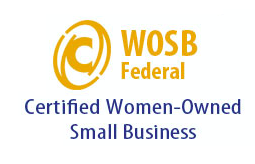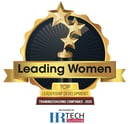
Continuing our blog series and 4 Steps to Making a Real & Lasting DE&I Impact, we covered step #3 and how to build inclusive leadership across your business. We explored how creating a culture of inclusion can start to address our diversity challenges and ensure that all talent is welcomed, valued, and developed. The next part of the prescription addresses the ‘E’ in DE&I, which I feel is the ‘Cinderella’ of the equation. Equity is critical to long-term success, but often the poor relation when it comes to share of company attention, action, and resources.
First, the facts
Diverse talent is massively underrepresented in organizations around the globe, and the picture is even more dire when you look at senior level leadership or executive positions. Research shows there is still a lack of women in leadership. Pew Research indicates the share of female CEOs of Fortune 500 companies reached an all-time high of 7.4% in 2020, with 37 women heading major firms. No Black or Hispanic women head Fortune 500 companies, while three Asian American women serve as CEOs. And recent research from Korn Ferry highlights that only 4 of our Fortune 500 companies have Black CEO’s. These stats may have changed slightly in 2021, but there is no doubt that we have a problem. A big, thorny problem.
Equity – lagging behind ‘Diversity’ & ‘Inclusion’?
Equity is about creating equal opportunity, equal access, and fundamentally, fairness for everyone. To accomplish this, we first must acknowledge that the current ecosystem in which we all live and work is inherently biased. It is far from a level playing field where everyone is treated fairly. The opening data about gender and black representation surely attest to this. A simple example of the ‘uneven playing field’ is the ubiquitous and innocent-looking ‘9 Box’ succession planning and talent development tool. Universally used to evaluate talent and make seminal career decisions, it lacks real objectivity and relies too much on individual interpretation, especially of potential. All of which can be based on cultural familiarity and the biases of managers. An unintentional bias and barrier for diverse talent that is hidden in plain sight!
To remedy the inequities that exist, we must do two things simultaneously:
- Remove the barriers: we should focus on overhauling the ecosystem (or culture) to dismantle the harmful effects of bias.
- Provide special treatment. YES! Special treatment. It is imperative that we support and empower our diverse talent with tools and skills to help them succeed within the (flawed) ecosystem.
A resounding ‘yes’ to special treatment – leadership development for diverse talent
I see many organizations starting to address inequity with policies, procedures, and mechanisms that seek to eliminate bias. And sensitivity, inclusion, or unconscious bias training for all employees to educate them about the issues, and start to change mindsets. However, not many organizations are working with diverse talent directly to provide the tools and specific skills to navigate the systemic and paralyzing bias that is holding them back (and at the same time preventing organizations from reaching their full potential).
Leading NOW’s two research bodies, the Gender Dynamics Institute (GDI) and Center for Diversity & Inclusion (CDI) have identified 9 career-specific differentiators that diverse employees need to demonstrate, to prove that they have the skills and capabilities to be business leaders and placed in talent pipelines to leadership roles.
Let’s consider an example related to gender to clarify. Our research shows that traditional career advice given to women neglects The Missing 33%® of the career success equation –– business, strategic, and financial acumen. The research further indicates women tend to receive supportive rather than strategic mentoring, which is needed for them to demonstrate competence for senior leadership roles. In this example, specific women-focused training can empower them to understand why it’s important to get coaching and mentoring that is strategic and focused on business and financial acumen, and the courage and skill-set to ask for it. More generally, support for diverse talent is about providing access for those individuals who have been unfairly disadvantaged by traditional systems, and should focus on the skills and competencies most needed to help them advance.
Without these insights and skill sets our diverse talent has little chance of enjoying equal opportunity with our more mainstream talent. And in that scenario, everyone loses.
Not about FIXING our diverse talent
I cannot stress enough that this kind of development opportunity is NOT about ‘fixing’ diverse talent. There is nothing wrong with diverse talent. On the contrary, diverse and underrepresented talent brings new perspectives and strengths to an organization, and we know (McKinsey) that having a diverse workforce and diversity in senior leadership teams results in a real competitive advantage. Leadership development for diverse talent is about access and additional support for groups who are especially and unfairly disadvantaged.
Not about fitting the MOLD
Neither is development of diverse talent about encouraging them to ‘fit the mold’ and become the same kind of leader that your company currently has. It is about helping our diverse talent navigate and overcome the systemic barriers they face. Learning how to be savvy and strategic with one’s personal brand is often the lift that diverse talent needs to be considered for advancement and set up for lasting success.
Not about creating an Employee Resource Group (ERG)
ERG’s have a role and a place in support of diverse talent, but in my experience, they are not the single panacea for empowering diverse talent and achieving inclusion goals. To be effective, ERG’s or affinity groups need to have a direct correlation to DEI success metrics. They should be sponsored by senior leaders, linked to strategic business outcomes, and supported with appropriate tools and programs. And they need to be a complement to other DEI initiatives, so we are not placing the burden of the work, on the very people who most need help.
It IS about Equity
As you contemplate your DEI goals and strategy, most of which aspire to have equality of access and opportunity for all, remember that we must first ensure equity before we can enjoy equality. Consider specialist development experiences for your diverse talent as a powerful way to level the playing field. Coupled with company-wide conscious-inclusion initiatives, development for diverse talent packs a formidable one-two punch.
I’ll leave you with this quote from McKinsey, which nicely sums up the opportunity:
“Organizations that implement DE&I assessments and strategies enable high-performance cultures, protect themselves from reputational risk, and concretely demonstrate commitment to organizational values, which all positively impact business performance. Perhaps most importantly, though, is that organizations are recognizing that pursuing DE&I is the right thing to do for society.”
Let’s partner together to ensure your organization makes the right choices for now and the future. To build inclusive leadership across your business AND prepare diverse talent for leadership, there is work to be done. We can help. #FutureForward
Read ON!

/(R)%20Missing%2033_-9%20CriticalFactors.png?width=367&height=199&name=(R)%20Missing%2033_-9%20CriticalFactors.png)








